VET MEDICINE
Ultrasound, EKGS Are Now Par For the Course?In Treating Exotic Animals

ALOHA VETS: Left to right ? Arnaldo Perez, DVM; Daniel Pepen, DVM; and Manuel Jose Pepen, DVM; Diplomate and ABVP (Canine & Feline Practice). (SpaceCoastMedicine.com image)
BREVARD COUNTY ? INDIAN HARBOUR BEACH ? Life would be much easier for the veterinarians at Aloha Pet and Bird Hospital if they could tap into Dr. Doolittle?s animal charms for help with patients, particularly of the exotic variety.

ALOHA STAFF: Left to right ? Heather DeVries, Megan Stenberg, Keila Perez, Emily Dixon, Kelly Marcelle, Susan Montague, Melody Basye, Valerie Kellum, Laurissa Luther, Paula Jaruse, Taylor Stallings-Pinnick and Kelly Grennan. (SpaceCoastMedicine.com image)
Prairie dogs with bronchial problems, egg-bound cockatiels, chameleons with chronic infections and fish with cancer ? not to mention the really, really sluggish tarantula ? are among the patients of this busy Indian Harbour Beach veterinary practice. All animal patients require a degree of detective work for vets, because, unlike humans, they can?t really tell the doctor how they?re feeling. Exotic pets, however, usually demand even greater deductive ability from their healers.
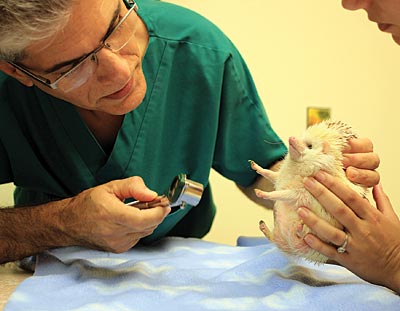
ALOHA VETERNARIAN Dr. Arnaldo Perez treats a Hedgehog, recognized by their spines which are hollow hairs made stiff with keratin. (SpaceCoastMedicine.com image)
?Many of the exotics are wild animals, and in the wild, animals tend to hide their illnesses in order to protect themselves from predators,? said Dr. Jose Pepen.
Because their pets give out few initial signals of an ailment, by the time the owner of an exotic pet notices there?s something wrong with their iguana or their parrot, the creature is often really ill, making treatment that much more difficult.
Treating exotic animals remains a specialty that a large number of veterinarians still choose not to practice. Clients from Kissimmee, for example, bring their Old World chameleon to Aloha for treatment that has included a tumor removal from its delicate little leg.
?I had a lady with a rat come all the way from Orlando, because she couldn?t find a veterinarian who would treat it,? said Pepen.
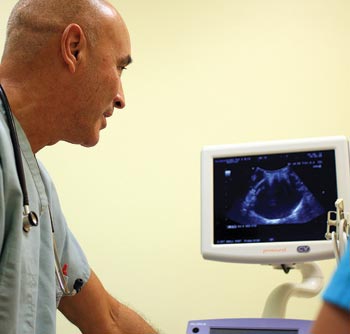
DR. MANUEL JOSE PEPEN checks on an ultrasound image. Treating exotic pets has come a long way since even as recently as a decade ago. Ultrasound, EKGs and other human diagnostic aids are now also par for the course in treating exotic animals. (SpaceCoastMedicine.com image)
Devoted ?rat people,? by the way, would not think it odd that this pet owner would travel so far to get help for an animal some people consider just on the other side of vermin.
?People who have pet rats are so loyal because the animals, even though they live only for two or three years, become very attached to their owners,? said Pepen.
Rats tend to develop mammary cancer, so Pepen and his colleagues at Aloha have become adept at removing the tumors from these tiny creatures. Pepen operated on a three-year-old rat, and his owner was delighted to gain even a few more months with his beloved rodent. ?The rat is still doing fine,? he said.
Treating Exotic Pets Has Come A Long Way
Operating on an animal the size of a rat illustrates one of the challenges veterinarians face when treating exotic animals. ?They can be very hard to treat because they?re so small,? said Pepen.
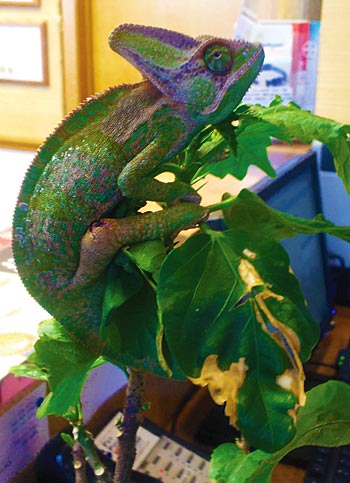
Some of the toughest customers are the tiny chameleon patients at Aloha. ?You?re dealing with micro-analysis with these little things, so it?s very difficult,? said Pepen. (Image For SpaceCoastDaily.com)
Some of the toughest customers are the tiny chameleon patients at Aloha. ?You?re dealing with micro-analysis with these little things, so it?s very difficult,? said Pepen.
?People? doctors have a general template from which to begin a diagnosis, since people are basically the same shape. The same holds true with cats, dogs and horses, but that is not the case with exotics where metabolism can slip all over the map, making treatment tricky. Stitches may have to be left in for weeks versus days with some species. A snake will require a very different approach than a ferret or a lorikeet or a pet fish.
Yes, Aloha has treated fish as tiny as goldfish and as big as koi.
Even with mammals the treatment can vary significantly. For example, pet rabbits are delicate patients that can actually succumb from stress-induced heart failure. The animals are prone to tooth issues, primarily because owners do not feed them bunny-appropriate food.
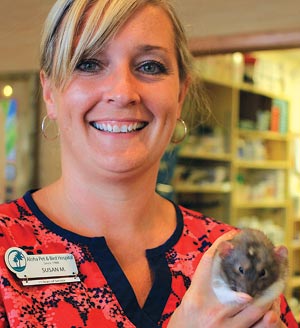
Susan Montague with a pet rat. (SpaceCoastMedicine.com image)
?You can?t intubate them because their mouths are so tiny,? said Pepen.
Treating exotic pets has come a long way since even as recently as a decade ago. Ultrasound, EKGs and other human diagnostic aids are now also par for the course in treating exotic animals.
?For example, years ago, we used to put snakes in the refrigerator and induce hibernation, so we could treat them,? said Pepen.
?Now we are able to do many procedures and to do extensive blood work.?
Snakes these days get intubated just like humans do. Most of the reptiles? health woes arise from the ignorance of their owners.
?They don?t have the right temperature and habitat for them,? said Pepen.
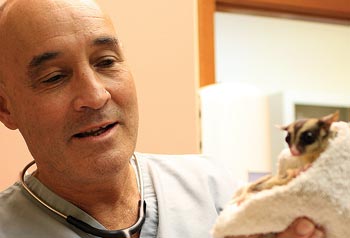
Dr. Manuel Jose Pepen holds a Suger Glider, a nocturnal animal native to eastern and northern mainland Australia.
If people did their homework before choosing an exotic, Pepen and his team would see a lot less patients.
?Some people buy pets with very little education about what they?re getting into,? said the vet.
Take prairie dogs, for example. These little scurrying denizens of the desert are sometimes selected as pet of choice by folks in Brevard. The critters are cute, but they don?t belong in humid Florida. Transplanting them to the Space Coast is asking for a host of health issues.
?We find that they have chronic respiratory issues because they just can?t adapt to life here,? said Pepen.
?Weirdest? Patient Category
In the weirdest patient category, it is hard for Pepen to top the case of the sluggish tarantula. A client brought in his pet arachnid after noticing the animal wasn?t eating and seemed listless. Upon examination, Pepen pronounced it DOA.
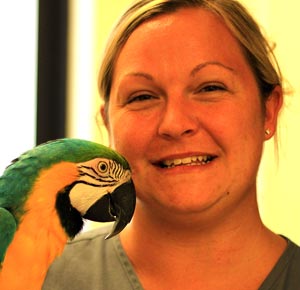 ?I think it had been dead for several days,? he said.
?I think it had been dead for several days,? he said.
Caesarian surgery is common among bird and reptile. For example, Pepen successfully performed Caesarians on both an egg-bound cockatiel and a big green iguana.
The largest exotic patient Pepen has treated was a massive 400-pound tortoise with a respiratory infection and vitamin deficiency. The tiniest was a miniscule rain forest lizard with a chronic infection.
Although dogs and cats will always remain Aloha?s primary patients, exotic pets add a touch of the unusual to the practice.
?They can be quite the challenge, but we do our best to help them,? said Pepen.
Click here to contribute your news or announcements Free
Source: http://spacecoastdaily.com/2012/09/exotic-pet-docs-are-high-tech/
apple juice apple juice occupy la miranda kerr adriana lima victoria secret angels fox 4
No comments:
Post a Comment
Note: Only a member of this blog may post a comment.